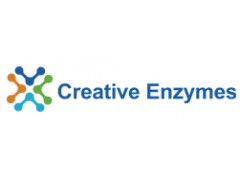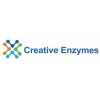Cat No.
NATE-0809
Description
The amidase from Pseudomonas aeruginosa catalyzes the hydrolysis of a small range of short aliphatic amides. Each amidase monomer is formed by a globular four-layer ?±?2?2?± sandwich domain with an additional 81-residue long C-terminal segment. This enzyme belongs to the family of hydrolases, those acting on carbon-nitrogen bonds other than peptide bonds, specifically in linear amides.
Abbr
Amidase, Recombinant (Pseudomonas aeruginosa)
Alias
Amidase
Source
E. coli
Species
Pseudomonas aeruginosa
Form
Solution in 50% glycerol containing 7 mM 2-mercaptoethanol and phosphate buffer salt.
Enzyme Commission Number
EC 3.5.1.4
Bio-activity
>200 units/mg protein (biuret)
CAS No.
9012-56-0
Concentration
14 mg/ml
Unit Definition
One unit will convert 1.0 ??mole of acetamide and hydroxylamine to acetohydroxamate and ammonia per min at pH 7.2 at 37 ?°C.
Applications
The importance of these hydrolases in biotechnology is growing rapidly, because their potential applications span through chemical and pharmaceutical industries as well as in bioremediation. Immobilized amidase can be used efficiently for production of acrylic acid from acrylamide, thus converting a toxic ambient contaminant into widely used industrial raw material. Amidases are potential treatments for human immunodeficiency virus and malaria. They may be used to eliminate metal ions in wastewater.
Synonyms
acylamidase; acylase (misleading); amidohydrolase (ambiguous); deaminase (ambiguous); fatty acylamidase; N-acetylaminohydrolase (ambiguous); amidase; EC 3.5.1.4; acylamide amidohydrolase





